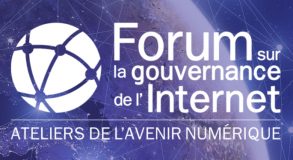Created in 1998 by the Clinton Administration to ensure the “privatisation” of Internet governance which had been overseen by American universities and research centres up until then, the acronym ICANN is well-known to those working in domain names.
And yet, its philosophy, its specific missions and its organisation remain largely unknown. This series of publications will lift the veil of mystery and perhaps help our readers better interact with ICANN.
In this second instalment, we will be focusing on the context of ICANN’s creation and will be detailing the four main principles that define its operating model.
ICANN was created in response to the concerns of governments that were alarmed to see an increasingly important resource for all remain under the exclusive control of Washington.
Some would have preferred the management of the IANA function to be handed over to pre-existing international organisations, particularly the ITU (International Telecommunication Union) in operation since 1866 for telegraphs and later telecoms. But Washington was not willing to relinquish its control and to share it with other governments, and a large proportion of stakeholders from civil society and the economic sector felt the same way. “Privatisation” within an entity in the US, contractually dependent on the US Government seemed a preferable scenario.
ICANN was thus created in the form of a not-for-profit private sector corporation under Californian law. It did not have shareholders, but “stakeholders”, and could not pay out dividends.
The key words that best define the spirit in which the future ICANN was intended to function were “open and inclusive”, “transparent”, “bottom up decision process” and “consensus driven”.
- “Open and inclusive”, because it was designed to bring together all Internet stakeholders, from back-end operators to users, as well as economic actors and, of course, governments.
- “Transparent”, because the areas of responsibility of the organisation covered subjects so sensitive that it was vital, in order for it to be accepted in its role, that no-one could suspect it of having been “hijacked” by private interests. Everyone must therefore be able to make sure that it worked in the interest of the Internet community.
- “Bottom-up decision process” to emphasise that the Internet community itself, duly represented within various bodies, would be able to develop and put forward the best possible solutions for the administration and technical “governance” of the Internet.
- “Consensus driven”, insofar as decisions had to be taken by the Board based on draft resolutions drawn up by the various bodies. These draft resolutions would be discussed and formalised until a consensus was reached between the parties.





